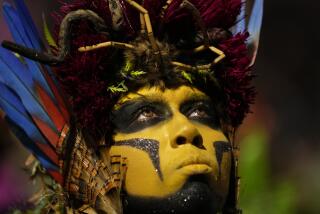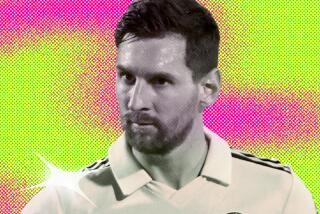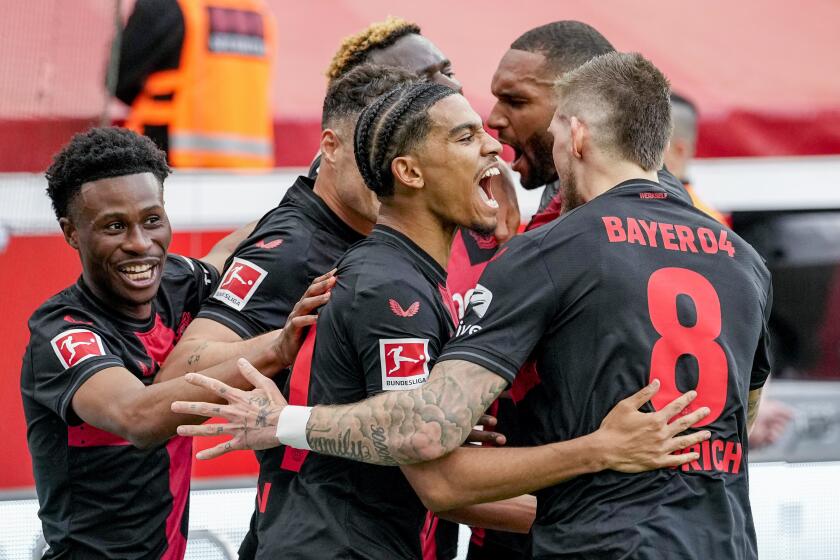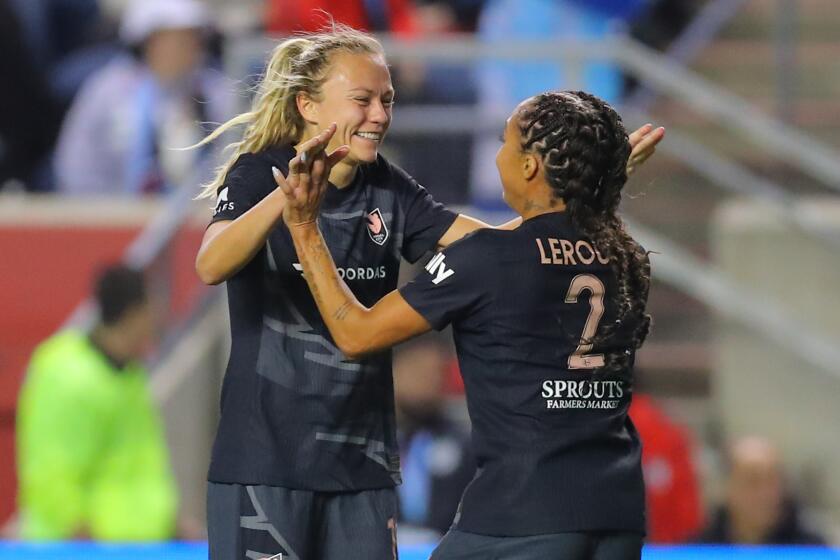In unusual sight, flags fly in Brazil for World Cup
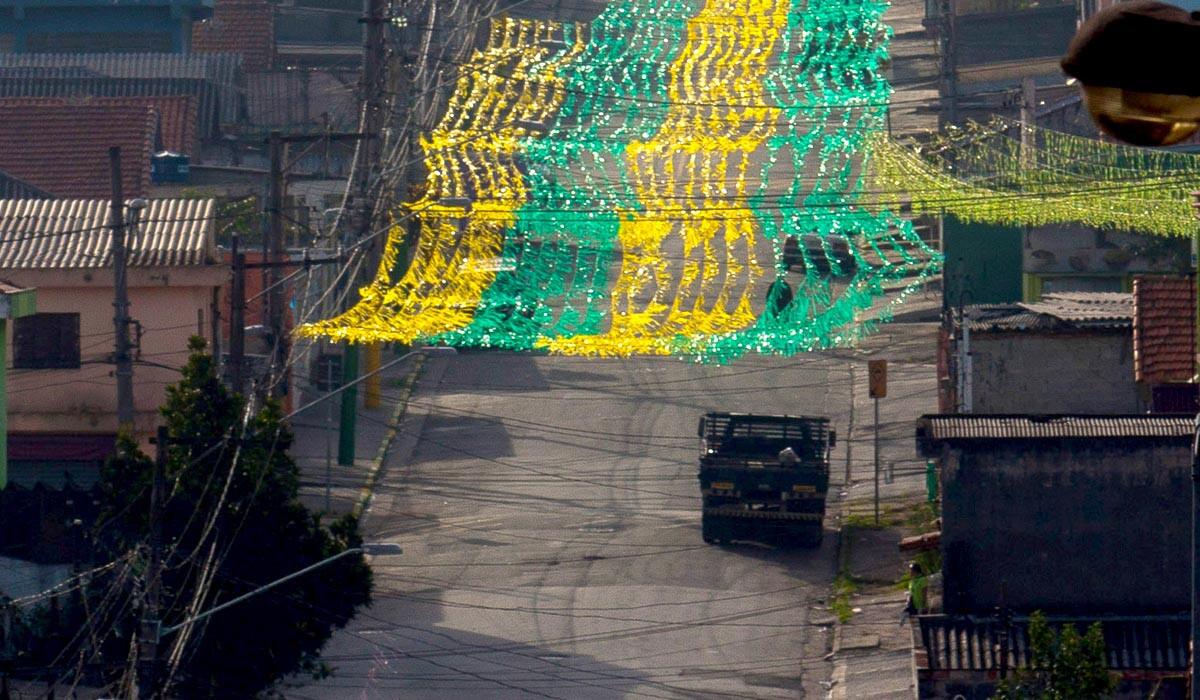
SAO PAULO, Brazil — Cheap plastic flags, strung above dirt streets separating squat cinder-block homes, flapped noisily in the wind Friday. A fleet of minivans, painted in Brazil’s national colors of green, yellow and blue, carried two small soccer balls on their dashboards as they ferried children to and from school.
And at the Metro shopping center across from Arena Corinthians, site of Thursday’s World Cup opener, Wesley Machado was doing a brisk business selling hot dogs themed around seven of the tournament’s 32 teams. (The Mexican hot dog was served in a tricolored bun topped with chili, guacamole and peppers, while the U.S. version featured a sausage covered with coleslaw, cheddar cheese and barbecue sauce.)
Soccer fever is never far from the surface in Sao Paulo, where the sport touches many aspects of daily life. But the overt nationalism that has sprung up in preparation for the World Cup has become a little uncomfortable for some — especially those in the city’s poorer areas.
“You never see that here,” Jhonata Oliveira, a taxi driver from the working-class neighborhood of Itaquera, says of the flag-waving. “The only place you would see a flag is above City Hall or someplace like that.”
But then it’s not every day a country gets to play host to the world’s largest sporting event. Brazil hasn’t staged a World Cup since 1950, so maybe a little flag waving is warranted. “It’s good that Brazil has such a big event,” Oliveira said. “But I don’t like the robbery.”
“The robbery.” That’s how many here refer to the $11 billion spent on the tournament before one ball has been kicked. For example, in Sao Paulo, which already has two soccer stadiums, the government spent more than $438 million to build another for the World Cup.
“They could have renovated [the others] and they could have used that money for a hospital,” Oliveira said. “The hospital around here, you enter alive and you come out dead.”
Sergio Roberto Da Silva, a former minor league soccer player who is now director for a sports club that sits beneath a teeming hillside shantytown, known as a favela, in San Paulo’s Guaianases district, is still praying some of that World Cup largesse eventually trickles down to him. His club, he says, has taken 800 kids off the street, fed them and given them a place to play soccer — all without any support from the government.
“There’s a lot of development in the neighborhood,” he said. “Hopefully it will bring a lot of education and healthcare. There’s a lot still missing.”
Weather report
Brazil’s winter is generally a dry season in Sao Paulo, which averages about 2 inches of rainfall during June. But a drizzle fell most of Friday and forecasters say there is a chance rain will return to the drought-ridden area by the start of next week.
By Thursday’s World Cup opener between Brazil and Croatia, however, the skies are expected to clear, with predictions calling for game time temperatures in the mid 60s.
The Times’ special correspondent Vincent Bevins contributed to this report.

